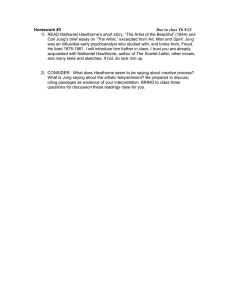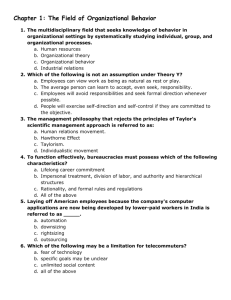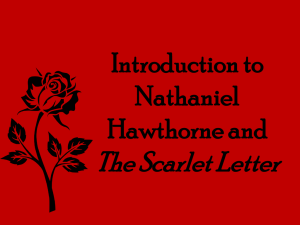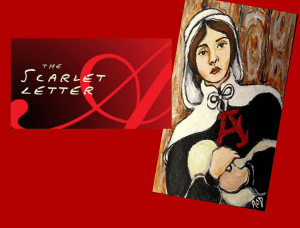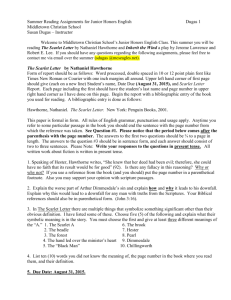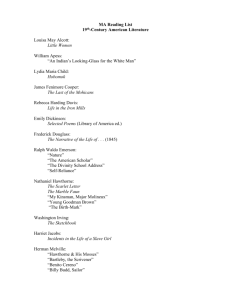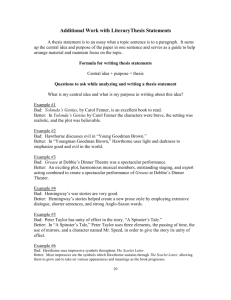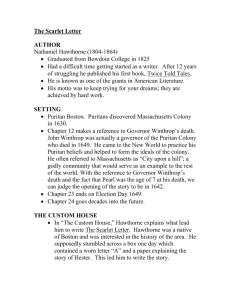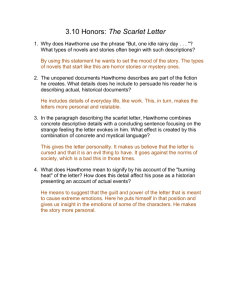The Scarlet Letter
advertisement
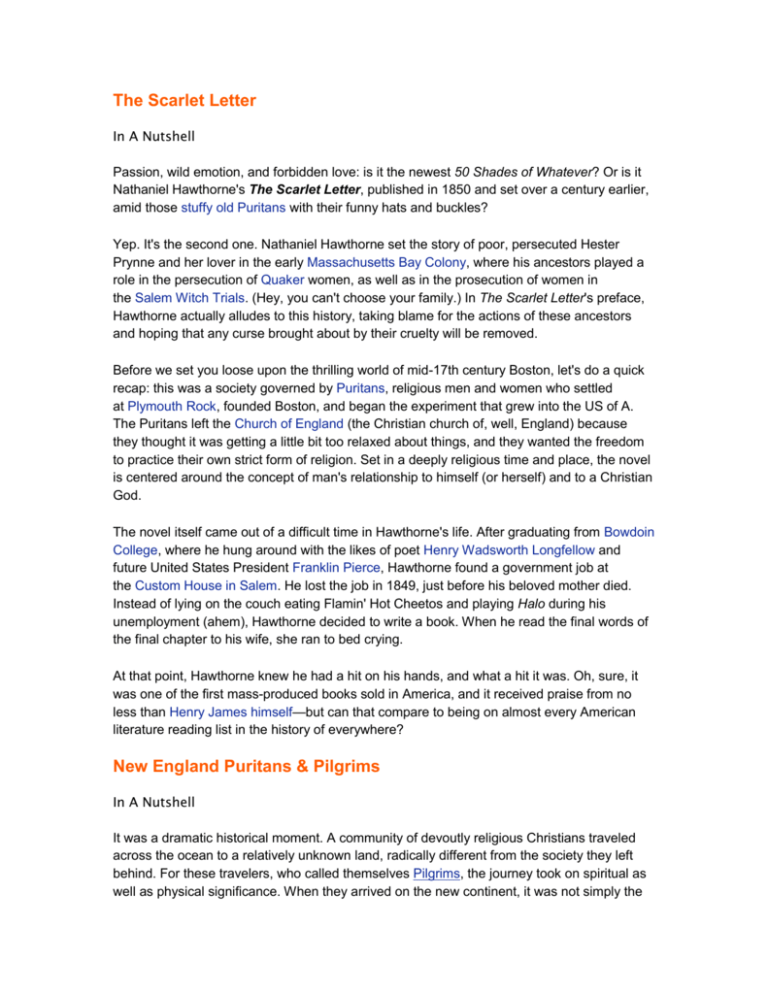
The Scarlet Letter In A Nutshell Passion, wild emotion, and forbidden love: is it the newest 50 Shades of Whatever? Or is it Nathaniel Hawthorne's The Scarlet Letter, published in 1850 and set over a century earlier, amid those stuffy old Puritans with their funny hats and buckles? Yep. It's the second one. Nathaniel Hawthorne set the story of poor, persecuted Hester Prynne and her lover in the early Massachusetts Bay Colony, where his ancestors played a role in the persecution of Quaker women, as well as in the prosecution of women in the Salem Witch Trials. (Hey, you can't choose your family.) In The Scarlet Letter's preface, Hawthorne actually alludes to this history, taking blame for the actions of these ancestors and hoping that any curse brought about by their cruelty will be removed. Before we set you loose upon the thrilling world of mid-17th century Boston, let's do a quick recap: this was a society governed by Puritans, religious men and women who settled at Plymouth Rock, founded Boston, and began the experiment that grew into the US of A. The Puritans left the Church of England (the Christian church of, well, England) because they thought it was getting a little bit too relaxed about things, and they wanted the freedom to practice their own strict form of religion. Set in a deeply religious time and place, the novel is centered around the concept of man's relationship to himself (or herself) and to a Christian God. The novel itself came out of a difficult time in Hawthorne's life. After graduating from Bowdoin College, where he hung around with the likes of poet Henry Wadsworth Longfellow and future United States President Franklin Pierce, Hawthorne found a government job at the Custom House in Salem. He lost the job in 1849, just before his beloved mother died. Instead of lying on the couch eating Flamin' Hot Cheetos and playing Halo during his unemployment (ahem), Hawthorne decided to write a book. When he read the final words of the final chapter to his wife, she ran to bed crying. At that point, Hawthorne knew he had a hit on his hands, and what a hit it was. Oh, sure, it was one of the first mass-produced books sold in America, and it received praise from no less than Henry James himself—but can that compare to being on almost every American literature reading list in the history of everywhere? New England Puritans & Pilgrims In A Nutshell It was a dramatic historical moment. A community of devoutly religious Christians traveled across the ocean to a relatively unknown land, radically different from the society they left behind. For these travelers, who called themselves Pilgrims, the journey took on spiritual as well as physical significance. When they arrived on the new continent, it was not simply the vast forests or lack of densely populated areas and developed commercial markets that made it a land of opportunity and rebirth. The New World represented a fresh slate, an ocean away from the sins and corruption of the Old World and a chance to start anew, to build a society from the ground up on firmly pious principles. Native Americans' contact with these newcomers was a startling encounter across a vast cultural and spiritual divide. Not only did European settlement encroach upon their lands, but it brought devastating plagues of diseases never before encountered on the North American continent, which soon decimated Indian populations. Both the English and the Indians survived the setbacks and the ravages of disease and death; different members of both groups approached one another with a range of reactions, from trust and generosity to hostility and suspicion. In their first half century on the new continent, the English settlers learned from, interacted with, and battled against the Indian nations of New England. They also developed the institutions for which they would be forever remembered: the town meeting, the Congregational church, the hard-scrabble farming life of New Englanders, and the Protestant work ethic, which influenced the character and composition of subsequent American societies.

